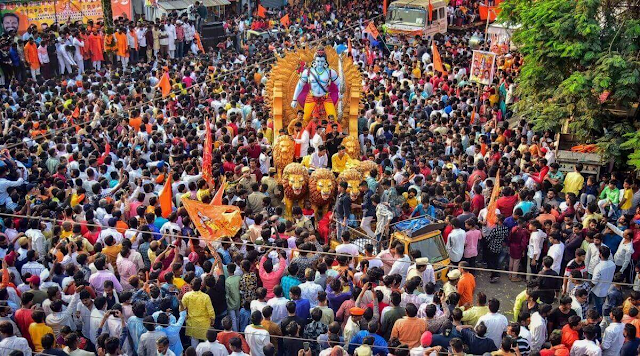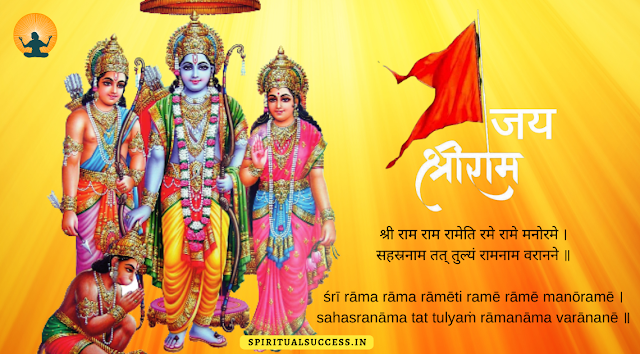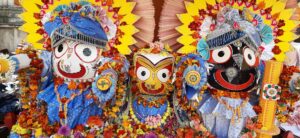Sri Rama Navami is an important Hindu festival that celebrates the birth of Lord Rama, the seventh avatar of Lord Vishnu. It is celebrated on the ninth day of the Chaitra month, which usually falls in the month of March or April. This festival is widely celebrated across India and other parts of the world, and it holds great significance in Hindu mythology.
Significance of Sri Rama Navami:
Sri Rama Navami is significant for many reasons in Hindu mythology. It celebrates the birth of Lord Rama, the seventh avatar of Lord Vishnu, who is revered as an embodiment of righteousness, virtue, and compassion. Lord Rama’s life and teachings are a source of inspiration and guidance for millions of people around the world.
The festival also symbolizes the victory of good over evil and the triumph of righteousness. Lord Rama’s defeat of the demon king Ravana, who abducted his wife Sita, is seen as a victory of good over evil. It is believed that Lord Rama’s life and actions serve as a model for people to lead righteous and virtuous life.
Sri Rama Navami also marks the beginning of spring and the start of the agricultural season. People decorate their homes and temples with flowers, lights, and rangolis, and prepare sweets and savouries to offer to Lord Rama. The festival is celebrated with great enthusiasm and fervour across India and other parts of the world.
Celebration and Dates:
The celebration of Sri Rama Navami begins with observing a nine-day fasting period known as Navratri. On the ninth day, which is Sri Rama Navami, devotees perform special prayers and rituals to seek the blessings of Lord Rama. People decorate their homes and temples with flowers, lights, and rangolis. Sweets and savouries are prepared and distributed among family and friends.
In some parts of India, a grand procession is taken out on the streets, with devotees carrying idols of Lord Rama, Sita, Lakshmana, and Hanuman. The procession is accompanied by music, dance, and devotional songs. People also recite the Ramayana, the epic story of Lord Rama’s life, and perform bhajans and kirtans to invoke his blessings.
The date of Sri Rama Navami varies every year, depending on the Hindu lunar calendar. Ram Navami is celebrated on the ninth day of Chaitra Navratri; observing Ram’s birth as the seventh avatar of Vishnu. This year Ram Navami 2023 lies on Mar 30 and will be considered a bank holiday.
The Story behind Sri Rama Navami:
According to Hindu mythology, Lord Rama was born to King Dasharatha and Queen Kaushalya in Ayodhya. His birth occurred at noon on the ninth day of the Chaitra month. Lord Rama was the eldest son of King Dasharatha, and he was supposed to be the heir to the throne of Ayodhya. However, due to a conspiracy by his stepmother, Queen Kaikeyi, Lord Rama was exiled to the forest for fourteen years.
During his exile, Lord Rama fought against the demon king Ravana to rescue his wife, Sita, who was abducted by Ravana. With the help of his loyal brother Lakshmana and his devotee Hanuman, Lord Rama defeated Ravana and brought Sita back to Ayodhya. Lord Rama’s victory over Ravana is seen as a triumph of good over evil and is celebrated as Dussehra or Vijayadashami.
Important Sri Rama Temples:
There are several important Sri Rama temples across India that attract millions of devotees every year. Some of the most famous temples include:
Ram Janmabhoomi Temple in Ayodhya, Uttar Pradesh: This temple is built on the site where Lord Rama is believed to have been born. It is one of the most important pilgrimage centres for Hindus.
Bhadrachalam Temple in Telangana: This temple is located on the banks of the Godavari River and is dedicated to Lord Rama. It is believed that Lord Rama and Sita lived here during their exile.
Ramanathaswamy Temple in Rameswaram, Tamil Nadu: This temple is one of the twelve Jyotirlinga temples dedicated to Lord Shiva. It is believed that Lord Rama prayed to Lord Shiva here before crossing the sea to Lanka.
Sri Rama Navami Puja Process:
The puja process for Sri Rama Navami varies depending on the traditions and customs of different regions and communities. However, there are certain common rituals and practices that are observed during the puja. Here is a general outline of the Sri Rama Navami puja process:
Preparing for Puja: Clean the puja room and the house, take a bath, and wear clean clothes. Place a picture or idol of Lord Rama, along with idols of Sita, Lakshmana, and Hanuman, on a decorated platform.
Invocation: Begin the puja by invoking Lord Rama, and chanting mantras and slokas in his honor. You can recite the Rama Raksha Stotram, the Rama Ashtakam, or other hymns dedicated to Lord Rama.
Offering Puja: Offer flowers, fruits, and other offerings to Lord Rama and the other deities. You can also light incense sticks and lamps to invoke their blessings.
Reading of Ramayana: Read or listen to the Ramayana, the epic story of Lord Rama’s life and teachings. This is an essential part of the puja and can be performed individually or in a group.
Bhajans and Kirtans: Sing devotional songs and bhajans in honor of Lord Rama. This creates a joyful and positive atmosphere and helps in invoking the blessings of the Lord.
Arati: Perform arati or the waving of a lamp in front of the deities, accompanied by singing of arati songs. This marks the end of the puja.
Prasad distribution: Distribute the prasad or the offering that was made to Lord Rama, to the family members and guests.
Sri Rama Navami is an auspicious day and performing puja on this day is considered highly beneficial. It is believed that puja during this time helps in removing obstacles and brings peace and prosperity in one’s life.




